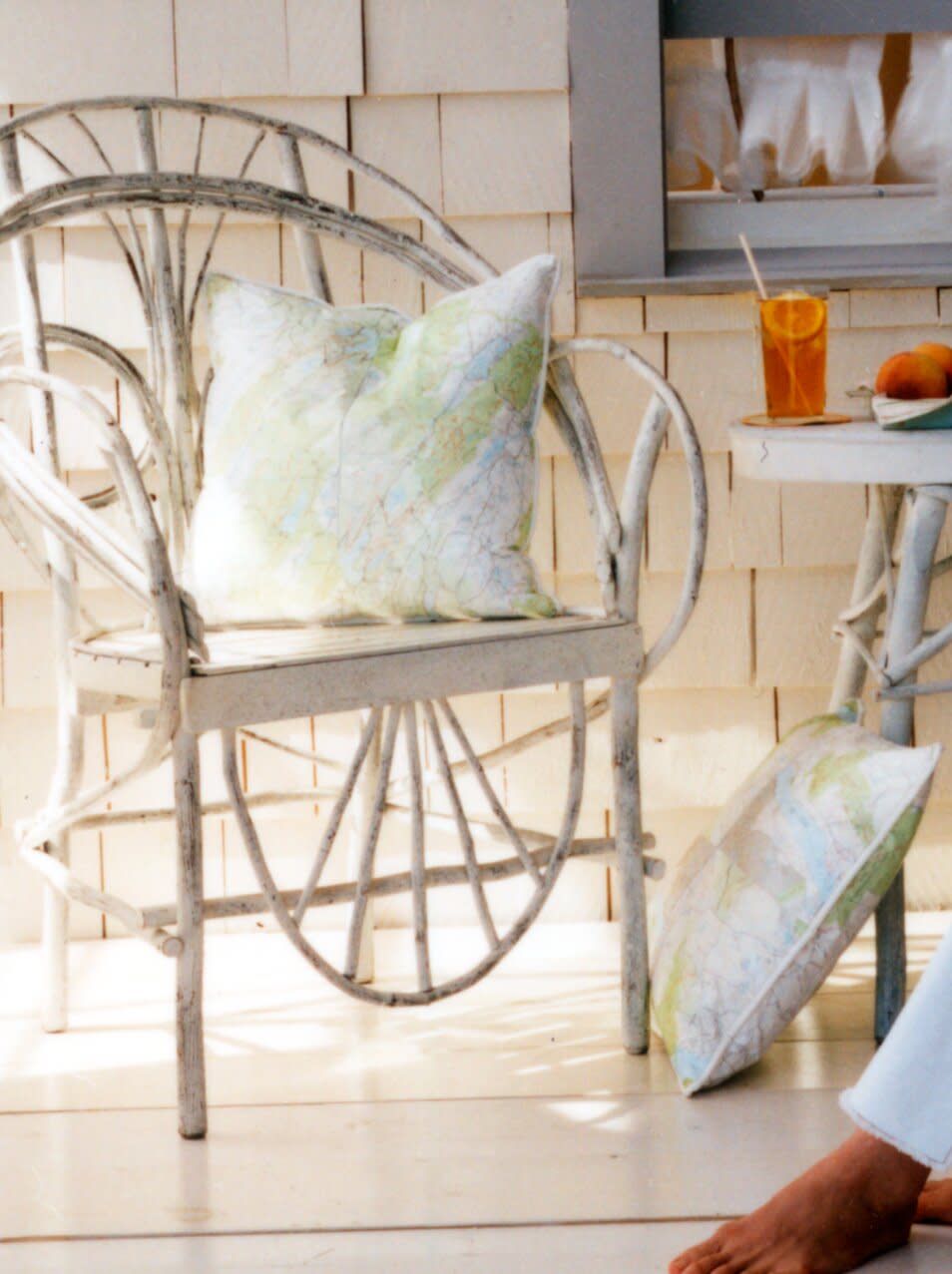How Vintage Map Textiles Became Nostalgic Mementos of the Great American Road Trip
With the development of interstate highways in the mid-20th century, a new American pastime was born: motoring. From the 1930s to the '60s, families everywhere piled into their Studebakers and set off for sights unseen as the roads laced the nation into a web of newly accessible vacation destinations. (Let Europe keep Rome; we had Palm Springs.)
The craze for road-tripping may have faded, but the era lives on through its souvenirs. Tourist textiles—state and city maps and illustrations screen-printed onto dishcloths, tablecloths, handkerchiefs, and scarves—were so popular, it's almost as if travelers suspected their freewheeling heyday wouldn't last forever.
Related: Nostalgic American Destinations Where You'll Happily Relive Your Best Memories

William Abranwicz
The History
Putting maps on fabric started in the 1700s, when explorers used information printed onto cotton and linen as navigation devices. But it took tourism to divorce maps from their utilitarian function and reinvent them as the kitschy items we know today. Beginning in the 1930s, maps were screen-printed onto various types of textiles and sold in souvenir shops across the nation. Today, these tablecloths, hankies, and scarves make charming decorative elements. The first incarnations, in the late 1930s, were quite literal, with tightly drawn lines and city or street names. After World War II, the realism began to loosen, and by the 1950s an alternate universe of cartoon-like figures and vibrant colors came to life on textiles across the United States.
"The graphics were so great," says Peggy Zalamea, a New York–based dealer whose appreciation for map textiles inspired her to cowrite the book Fun Linens & Handkerchiefs of the 20th Century ($24.48, amazon.com). "That's why we used the term fun linens." She says that the cheerful dish towels and tablecloths from Arizona, Michigan, Nevada,Vermont, and other destinations were meant to brighten a trailer or a bungalow.
What They Symbolize and Their Worth
Today, the value of these textiles is inversely proportional to the popularity of the vacation spot: You can find a Florida tablecloth for as little as $20, for instance, whereas a dish towel of the less-frequented Maine might run upward of $50. Not all map textiles are created equal; some designs are extremely rare and therefore more highly coveted, while others are ubiquitous and affordable at flea markets. Because they were used so frequently, scarves in pristine condition are hard to come by now. But their designs are often the most interesting and colorful.
Textiles by top designers—such as Tammis Keefe, Pat Prichard, Carl Tait, and Vera Neumann, who incorporated their signatures into the designs—are especially coveted. Most collectible of all are the hankies, in part because they are the easiest to find (and easiest to store). The biggest manufacturer was J.H. Kimball; you'll know its wares by the tiny gold rectangular label in the corner.
All these textiles served to remind buyers of their holidays once they were back home. The useful mementos were often so well loved that these days, the challenge to collecting them isn't their scarcity—there are plenty to go around—but their condition. They frequently turn up faded and frayed—a little too loved. Gentle wear and tear, however, only adds to their character, particularly when they're put to decorative use. The textiles can be mounted in a frame, backed with linen for a pillow cover, or even used to make a roller shade—the options, really, are all over the map.

